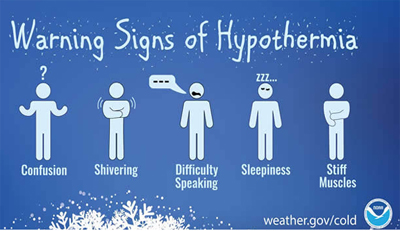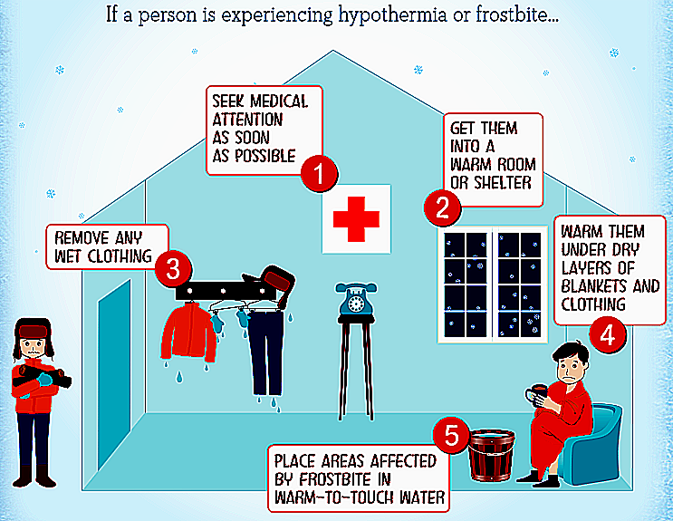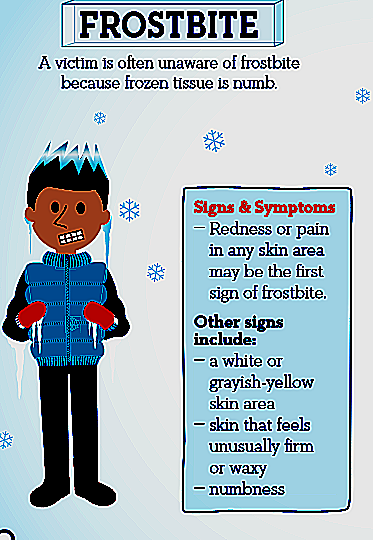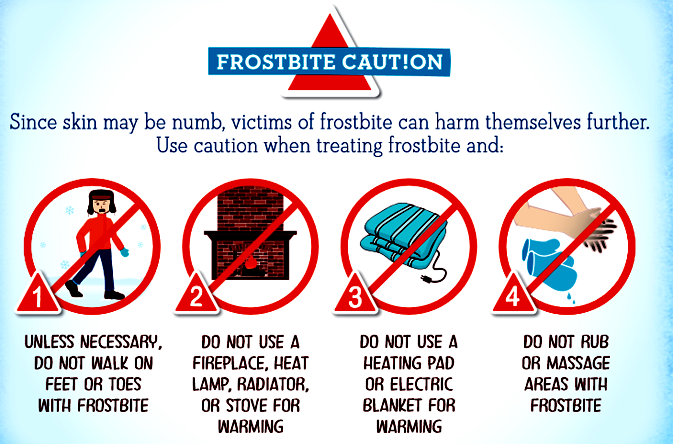Hypothermia (sometimes referred to as “cold stress”)
is not just being a little cold.
It is a preventable lowering of body temperature
that can cause death if not recognized and treated.
It does not just happen in the winter, people are at year-round risk.

The National Park Service had this warning:
“Hypothermia (lowering of body temperature) is a serious condition that may lead quickly to death.
Watch for signs of hypothermia: uncontrollable shivering, incoherent speech and exhaustion.
Seek shelter, replace wet clothing and provide warm, nonalcoholic liquids.
In serious cases, place the undressed victim in a sleeping bag with another undressed person.”
At https://www.nps.gov/pore/planyourvisit/yoursafety_hypothermia.htm we read:
“Persistent or violent shivering is a serious warning of the onset of hypothermia. Note that victims of hypothermia often deny that they are cold and often attempt to reassure others that they are “Okay.” Hypothermia is often associated with cold weather but can also occur on sunny days at the beach.”
At https://www.nps.gov/gari/planyourvisit/hypothermia.htm we read:
“Hypothermia is a medical emergency that occurs when your body loses heat faster than it can produce it, causing a dangerously low body temperature. Hypothermia can happen even in the summer, so always be prepared!
Hypothermia can result from cold ambient temperatures, especially when accompanied by wind or rain. Should you get wet, you must be aware that hypothermia will likely follow.
The Red Cross lists these
Signs and symptoms of hypothermia
o The person may seem indifferent, disoriented or confused.
o The person may have a “glassy” stare.
o The person may become unresponsive.
o Initially, the person may shiver, but as the core body temperature continues to decrease, the shivering may stop. This is a sign that the person’s condition is worsening and he or she needs immediate medical care.
Note that sometimes poor coordination (uncoordination) can precede shivering. Example: a good skier who becomes clumsy, someone who can’t zip up their jacket, hiker who stumbles on loose rock and falls behind the group, someone who can’t pass a heel-to-toe walk. A staggering gait can be an early sign even though body temperature is still normal because cold directly affects nerves to legs,
Why a glassy stare, difficulty speaking? (The brain can be one of the first things to go because it is most sensitive to cold.)
The Mayo Clinic warns
“Someone with hypothermia usually isn’t aware of his or her condition because the symptoms often begin gradually. Also, the confused thinking associated with hypothermia prevents self-awareness. The confused thinking can also lead to risk-taking behavior.”
And the CDC (Centers for Disease Control and Prevention) adds: “Body temperature that is too low affects the brain, making the victim unable to think clearly or move well. This makes hypothermia especially dangerous, because a person may not know that it’s happening and won’t be able to do anything about it.”
Another list of Symptoms of Hypothermia
• Uncontrolled shivering
• Loss of coordination; clumsiness and stumbling
• Slurring of speech
• Confusion, apathy or difficulty thinking, lack of sound judgement, “mild stupidity”
• Drowsiness and very low energy
• Shallow breathing, weak pulse, loss of consciousness.
• Impaired judgment
Unchecked, symptoms may progress to mental confusion, unconsciousness, and eventually death
The CDC adds: Babies:
• bright red, cold skin
• very low energy
Hypothermia causes loss of fine motor skills, so we fumble, stumble and tumble.
Our brains can have ill effects from the cold fairly quickly and we mumble and grumble.
Also could be the effects of High Altitude Cerebral Edema, and alcohol ingestion / intoxication.
Treatment
• Move person out from the cold, take them into a dry warm place.
• Remove the person’s wet clothing.
• Cover the person with dry blankets, or coats.
• If victim is outside place something on the ground underneath them to help warm the body.
• Monitor breathing; if victim has lost consciousness make sure to contact emergency services.
• If the person is conscious have then drink warm beverages, non alcoholic with no caffeine. (Avoid alcohol as it increases heat loss.)
• Do not apply direct heat, do not use hot water or a heating pad, the direct heat will damage the skin.

The National Park Service says:
Take Preventative Action
Put on rainwear or warm clothes before you become soaked or cold.
(There are descriptions of proper rainwear and warm clothes at Snow or rain camp must-haves)
Prevent hypothermia by managing clothing as needed. (Take off a jacket before getting sweaty. Ventilate or remove clothing layers before you sweat.)
Warm up your fingers before they are too stiff to work a zipper.
Eat high calorie food throughout the day before you become exhausted. Once someone gets hypothermia, “simple foods such as candy bars and hot chocolate will be absorbed the fastest. Follow up with food containing more complex carbohydrates such as bread and fruit.”
Keep hydrated. Dry winter air means you need more water to stay hydrated — don’t forget to drink because it’s cold out.. . .
Always carry rain gear and extra clothing. Dress in layers and avoid wearing cotton.”
Make sure all members of your party are aware of the symptoms of hypothermia and look out for each other.
from the the CDC (Centers for Disease Control and Prevention):
Who’s most at risk?
Victims of hypothermia are often:
• Older adults with inadequate food, clothing, or heating
• Babies sleeping in cold bedrooms
• People who remain outdoors for long periods—the homeless, hikers, hunters, etc.
• People who drink alcohol or use illicit drugs.
A person with severe hypothermia may be unconscious and may not seem to have a pulse or to be breathing. In this case, handle the person gently, and get emergency assistance immediately.
• Perform CPR, even if the person appears dead. CPR should continue until the person responds or medical aid becomes available. Keep warming the person while performing CPR. In some cases, hypothermia victims who appear to be dead can be successfully resuscitated.
FROSTBITE
From the CDC (Centers for Disease Control and Prevention):
What is frostbite?
Frostbite is a type of injury caused by freezing. It leads to a loss of feeling and color in the areas it affects, usually extremities such as the nose, ears, cheeks, chin, fingers, and toes. Frostbite can permanently damage the body, and severe cases can lead to amputation (removing the affected body part).

Who’s most at risk?
You may have a greater chance of developing frostbite if you
• have poor blood circulation
• are not properly dressed for extremely cold temperatures
If you notice redness or pain in any skin area, get out of the cold or protect any exposed skin—frostbite may be beginning. Any of the following signs may point to frostbite:
• A white or grayish-yellow skin area
• Skin that feels unusually firm or waxy
• Numbness
A person who has frostbite may not know they have it until someone else points it out because the frozen parts of their body are numb.
Don’t wait—take action!

If you notice signs of frostbite on yourself or someone else, seek medical care. Check to see if the person is also showing signs of hypothermia. Hypothermia is a more serious condition and requires emergency medical care.
If (1) a person shows signs of frostbite, but no signs of hypothermia and (2) immediate medical care is not available, do the following:
• Get the person into a warm room as soon as possible.
• Unless absolutely necessary, do not walk on feet or toes that show signs of frostbite—this increases the damage.
• Do not rub the frostbitten area with snow or massage it at all. This can cause more damage.
• Put the areas affected by frostbite in warm—not hot—water (the temperature should be comfortable to the touch for unaffected parts of the body).
• If warm water is not available, warm the affected area using body heat. For example, you can use the heat of an armpit to warm frostbitten fingers.
• Do not use a heating pad, heat lamp, or the heat of a stove, fireplace, or radiator for warming. Affected areas are numb and can easily burn.
Don’t substitute these steps for proper medical care. Frostbite should be checked by a health care provider. And remember, Hypothermia is a medical emergency and immediate medical care is necessary.
causes of frostbite (from NOLS Wilderness first Aid and other sources)
preoccupation with having fun and you don’t notice painfully cold toes transitioning to toes with no feeling that won’t wiggle You must treat frostbite early, “while it still causes tingling and pain and before it goes numb.”
cold, especially with wind chill
moisture (replace wet clothing or cover and insulate wet clothing)
wrong clothes (many survival books will tell you: Cotton Kills! / no percentage of cotton in your socks or long underwear; see a description of good clothes at Snow or rain camp must-haves)
lack of insulating clothes, lack of good raingear
contact with supercooled metal or fuel
any interference with blood circulation, such as a cramped position, tight clothing ( even wristwatches), local pressure (tightly laced boots)
dehydration (10% dehydration causes 30-40% decrease in thermal control)
Prevention: (see above causes) and make everyone in your group stop occasionally and wiggle their fingers and toes, flex their facial muscles.
Watch each other for gray or distinctly white skin. Change into dry, non-cotton socks regularly as needed.
– – – – – – – – – – – – – – – – – – – – – – – – – – – – – – – – – – –
From a NOLS (National Outdoor Leadership School) Wilderness case study:
“cold, damp socks is not a sign of toughness, rather, it’s a bad habit.”
Serious cold injuries to toes/feet can surprise
“people who thought their feet were just a bit cold.”
– – – – – – – – – – – – – – – – – – – – – – – – – – – – – – – – – – – – – – –
If you spill liquid fuel on your hands when handling a camping stove in the cold, you can get instant frostbite when it evaporates quickly. The fuel can damage or permanently wreck your fancy tent fabric, or your fancy clothing, so refuel at home before the trip and if needed during the trip, refill carefully outside of the tent. and see: Snow camp weather, hike safety and first aid considerations
– – – – – – – – – – – – – – – – – – – – – – – – – – – – – – – – – – –
and see: Heat Illnesses
– – – – – – – – – – – – – – – – – – – – – – – – – – – – – – – – – – –
(Note to on-line users not in my classes: this is a study sheet. It is not complete instruction in first aid or the topic named in the webpage title.)
The author of this webpage, (written as a homework reading assignment for my students), does not give any warranty, expressed or implied, nor assume any legal liability or responsibility for the accuracy, completeness, or usefulness of any information, product, or process included in this website or at websites linked to or from it. Users of information from this website assume all liability arising from such use.
– – – – – – – – – – – – – – – – – – – – – – – – – – – – – – – – – – –